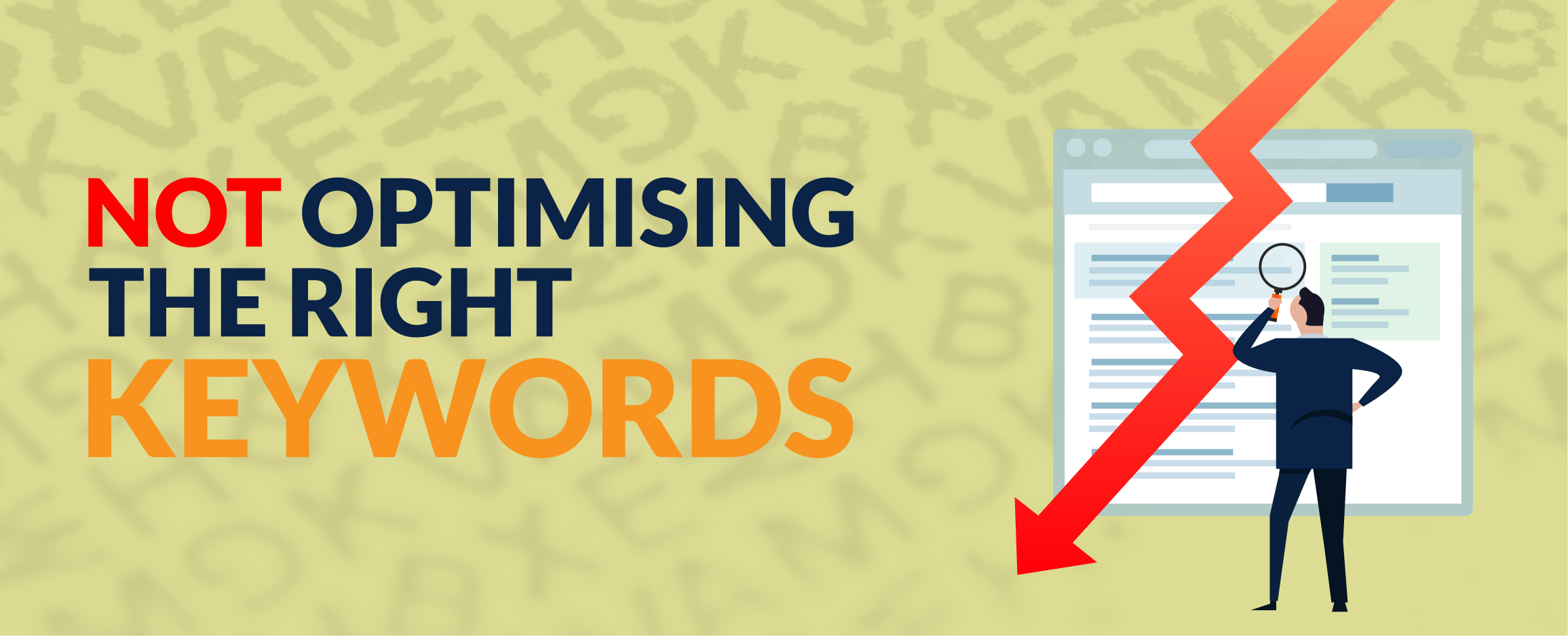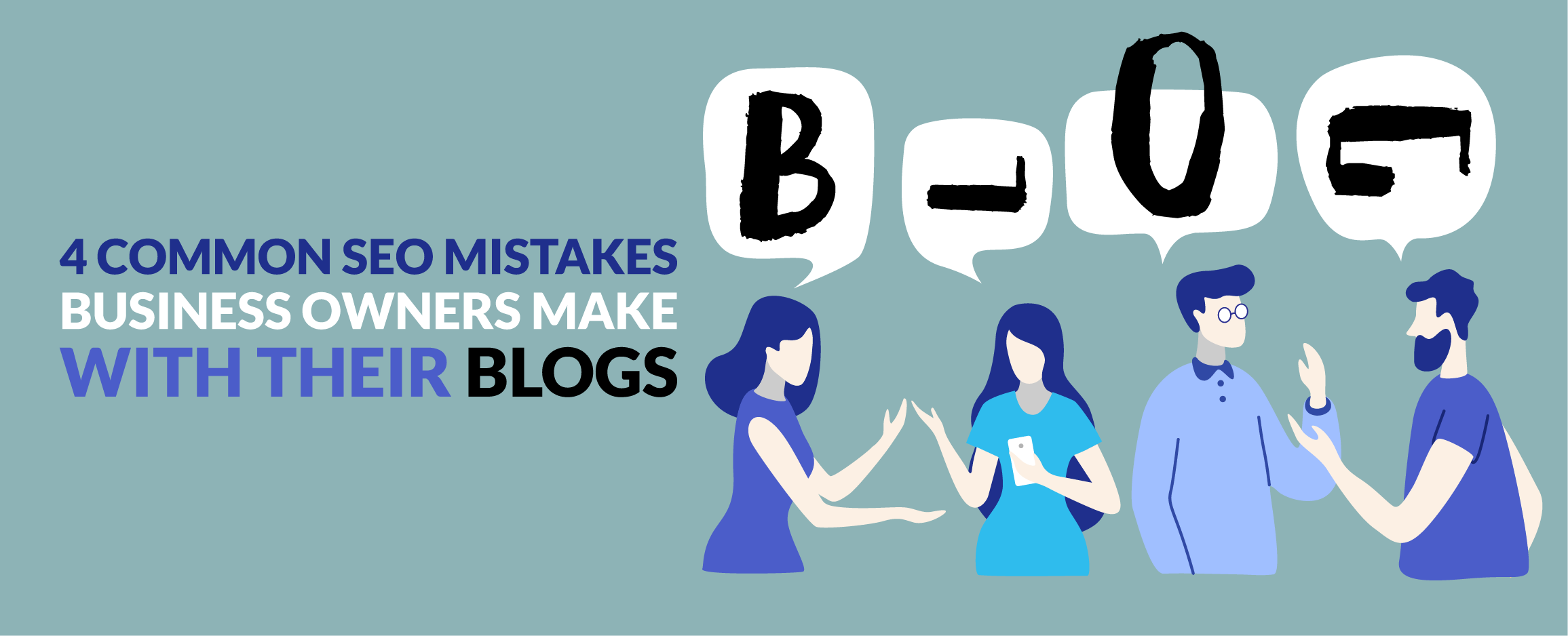Let’s get one thing straight: Blogging is essential for your SEO. However, besides the benefit to your organic Search Engine listings, it may also build trust between you and your returning/potential customers.
While effective Blogging puts you in a win-win situation, nobody is immune to making the odd mistake. Without trying to sound too much like a patronizing parent, the good news is that it’s pretty easy to learn from the occasional slip-up… and it’s just as easy to learn from the mistakes committed by others. We know which of the two we prefer.
We’ve discussed 4 of the most common SEO mistakes that Business owners make with their Blogs below.

1. Not optimising the right keywords
This is arguably the most common flub, and one that can be corrected with a more methodical approach. No matter how amazing your content is, or how many hours you spent crafting it, it won’t get you a good volume of traffic if you’re using the wrong keywords.
Some tech-savvy Business owners assume that there’s no need to focus on key terms anymore after the rise of semantic search. The truth is, you’ll still need to perform keyword research to pick out the phrases that are likely to bring you traffic. You need to use whatever tools you have at your disposal - paid or unpaid - to ensure that the terms you’re using have the right search frequency, and are the most applicable to your product/service.

2. Poorly written copy
When you’re writing copy for your Website, always keep your readers in mind. Too often, it’s the Search Engine that Business owners try to impress in their efforts to rank higher. The end result is a page of written content so overflowing with jargon and keyphrases that your average human (and yes, there are a few of us out here on the internet) cannot make sense of.
Blogging is all about informing and raising awareness. Good copy will do this without getting boring. The first step here is making sure your title gives a clear indication of what your Blog covers, as your reader will take - on average - 8 seconds to decide if they’ll continue reading or not. Additionally, use plenty of paragraph breaks for a more positive presentation and reading experience.
Don’t forget to include relevant images, videos, and GIFs to encourage readers to persist with your content. Clever use of visuals can prevent your text from looking too intimidating. As with any written content, always do a final proofread to eradicate any grammar and spelling errors.

3. Ineffective content promotion
We’ve said it a thousand times before, and we’ll probably say it a million times more, but having the best content Online means nothing if you’re not promoting it correctly. Remember that your Blog is an effective part of your SEO strategy. It isn’t - and never has been - a magical lead magnet that’s going to take your Business to the next level on its own.
In order to succeed, you’re going to need to have additional strategies in place to promote your content. Your Digital Marketing budget will always be the final decider when it comes to promoting yourself Online, but there’s always space to be creative.
For instance, if you’re trying to eke the most out of a low budget, reaching out to non-competitors and seeing if they’re interested in running some of your work on their Site is a great place to start. If you’re at the point on your journey where you can afford to spend a little more then great, why not look into exactly what you can be doing with Search Engines or Social Networks?
If you’re at all uncertain about the quality of your Blogging, or don’t even know where to start, do the smart thing and ask an expert.



